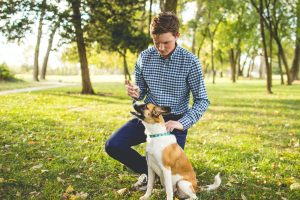
Potty training your beloved pet can be a laborious process, particularly for inexperienced dog owners. It often comes with messes, accidents, and numerous trash bags full of waste. To help you out, here are six tips to make the process easier.
Taking note of them
Active supervision, crate training, and restricting access to areas your pup favors are all viable methods for avoiding messes in the wrong spots. Additionally, a great idea is to have an indoor toilet for times when you cannot watch your dog. Limiting chances of them toileting where they shouldn’t reduce the possibility of their doing so again in the future.
Having patience is essential.
Punishing dogs for toileting accidents inside the house is unhelpful because they learn best through positive and negative experiences. Rather than associating toileting in front of humans with punishment, they are more likely to associate toileting in the house with punishment. Toilet training can be challenging, particularly if it’s not going according to plan. When a pup or adult dog has been reprimanded in the past for toileting inside, they become more secretive; they will wait until no one is around to do their business. This connection between punishment and avoidance of people increases when an owner does not watch the animal and it relieves itself indoors with no consequences.
Experiences that are positive in nature.
Construct a plan that works with your pup’s age and toileting behavior. Don’t forget to have extra restroom visits after meals, drinks, playtime or when they arise from sleeping. Once your pup has completed its business, offer it a reward and shower it with praise. Be sure to delay your compliments until the dog is finished, or you might inadvertently break its concentration.
See what surfaces they prefer.
Puppies, when they do their business, tend to be attracted to the type of surface they have used before. Thus, if they have had success relieving themselves on a particular kind of surface, then it is more likely that this is where they will go again in the future. However, this could lead to issues with potty training if puppy pee pads are used for a long period of time. Exposing puppies to the desired surfaces – such as rugs, carpets, bedding, and clothing – can help them develop a preference for those materials. If it’s not possible to have these around your pup all the time, you can use something that imitates their texture (like fake grass over puppy pee pads). Doing this will ensure they don’t have difficulty adapting when it comes to eliminating other kinds of surfaces. As your dog ages, its surface preference becomes more fixed, so you will need to be both patient and determined to modify it.
Potty training should be continuous.
Once a person believes their pup has mastered toilet training, they may shift their focus away from it and toward other matters. However, this can be an error since the time it takes to potty-train a pooch can fluctuate greatly depending on the animal’s nature and past behavior; it could require weeks, months, or even more.
Ask your vet.
If your pooch is having more difficulty than usual with urination or defecation, a variety of medical issues could be the cause. To make sure everything is okay, it’s best to take them to the vet for a check-up. Toilet training your dog and then finding them urinating or defecating indoors can be an indication of a deeper behavioral issue that requires professional assistance. A trainer is invaluable in helping you to manage any toileting issues long-term.
With persistence and a bit of patience, you could assist your dog in learning the appropriate places to relieve itself.
 wagwagtail "only love can make your dog wag her tail"
wagwagtail "only love can make your dog wag her tail"
